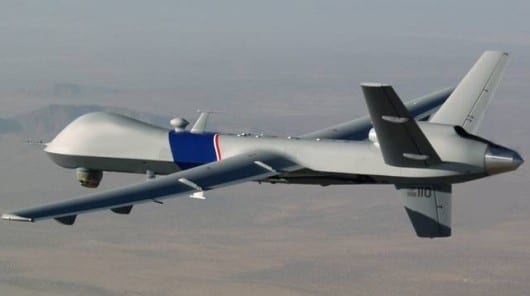
Researchers are developing computers capable of “approximate computing” to perform calculations good enough for certain tasks that don’t require perfect accuracy, potentially doubling efficiency and reducing energy consumption.
“The need for approximate computing is driven by two factors: a fundamental shift in the nature of computing workloads, and the need for new sources of efficiency,” said Anand Raghunathan, a Purdue Professor of Electrical and Computer Engineering, who has been working in the field for about five years. “Computers were first designed to be precise calculators that solved problems where they were expected to produce an exact numerical value. However, the demand for computing today is driven by very different applications. Mobile and embedded devices need to process richer media, and are getting smarter – understanding us, being more context-aware and having more natural user interfaces. On the other hand, there is an explosion in digital data searched, interpreted, and mined by data centers.”
A growing number of applications are designed to tolerate “noisy” real-world inputs and use statistical or probabilistic types of computations.
“The nature of these computations is different from the traditional computations where you need a precise answer,” said Srimat Chakradhar, department head for Computing Systems Architecture at NEC Laboratories America, who collaborated with the Purdue team. “Here, you are looking for the best match since there is no golden answer, or you are trying to provide results that are of acceptable quality, but you are not trying to be perfect.”
However, today’s computers are designed to compute precise results even when it is not necessary. Approximate computing could endow computers with a capability similar to the human brain’s ability to scale the degree of accuracy needed for a given task. New findings were detailed in research presented during the IEEE/ACM International Symposium on Microarchitecture, Dec. 7-11 at the University of California, Davis.
The inability to perform to the required level of accuracy is inherently inefficient and saps energy.
“If I asked you to divide 500 by 21 and I asked you whether the answer is greater than one, you would say yes right away,” Raghunathan said. “You are doing division but not to the full accuracy. If I asked you whether it is greater than 30, you would probably take a little longer, but if I ask you if it’s greater than 23, you might have to think even harder. The application context dictates different levels of effort, and humans are capable of this scalable approach, but computer software and hardware are not like that. They often compute to the same level of accuracy all the time.”
Purdue researchers have developed a range of hardware techniques to demonstrate approximate computing, showing a potential for improvements in energy efficiency.
The research paper presented during the IEEE/ACM International Symposium on Microarchitecture was authored by doctoral student Swagath Venkataramani; former Purdue doctoral student Vinay K. Chippa; Chakradhar; Kaushik Roy, Purdue’s Edward G. Tiedemann Jr. Distinguished Professor of Electrical and Computer Engineering; and Raghunathan.
Recently, the researchers have shown how to apply approximate computing to programmable processors, which are ubiquitous in computers, servers and consumer electronics.
“In order to have a broad impact we need to be able to apply this technology to programmable processors,” Roy said. “And now we have shown how to design a programmable processor to perform approximate computing.”
The Latest on: Approximate computing
[google_news title=”” keyword=”Approximate computing” num_posts=”10″ blurb_length=”0″ show_thumb=”left”]
via Google News
The Latest on: Approximate computing
- Lenovo ThinkPad deals: Save over $1,000 on the classic laptopon May 9, 2024 at 7:55 am
This should get you through most day-to-day computing routines, and has a little extra oomph for kicking back with movies and other content for long stretches. Another budget-friendly ThinkPad ...
- Measuring differential privacy could balance meaningful analytics and health care data securityon May 6, 2024 at 12:58 pm
The next step is mathematically proving the privacy guarantee of the approximate output distribution is close ... a biostatistician in the Advanced Computing in Health Sciences Section of ORNL's ...
- Investing in Cloud Computing Stockson May 2, 2024 at 5:58 am
Cloud computing, spurred by the pandemic, maintains its upward trajectory, with spending projected to nearly double in the near future. Key players like Salesforce and Adobe have adapted well to ...
- Not a Genius move: Resurrecting war hero Alan Turing as your 'chief AI officer'on May 2, 2024 at 1:46 am
Seemingly unaware of his own crassness, Genius Group CEO Roger James Hamilton took to Xitter yesterday to welcome the organization's "new Chief AI Officer, Alan Turing – resurrected after 70 years." ...
- Computing and Information Technologieson May 1, 2024 at 5:00 pm
RIT’s computing and information technology degree teaches you complex computing systems and how to become well-versed in their management. Information technology is found in every aspect of our ...
- Quantum Computing Newson April 28, 2024 at 5:00 pm
Their prototype refrigerator ... Researchers Unlock Potential of 2D Magnetic Devices for Future Computing May 1, 2024 — A research team has created an innovative method to control tiny magnetic ...
- Low Power Universal Gates for Approximate Computingon April 28, 2024 at 5:00 pm
Approximate Computing is a technique which can perform calculations good enough for certain tasks that don’t require perfect accuracy, potentially doubling efficiency and reducing energy consumption.
- Best cloud computing service of 2024on April 19, 2024 at 7:12 am
This situation made it harder to build and maintain online platforms, but cloud computing services saved the day. Right now, anyone can sign up for a cloud computing service and rent servers ...
- Powered by Qualcomm, Aethir Unveils Game-Changing Aethir Edge Device to Unlock the Decentralized Edge Computing Futureon April 18, 2024 at 6:02 am
At the Dubai Press Conference, Aethir Edge debuted as the pioneering edge computing device and the first authorized mining machine of Aethir, one of the industry-leading decentralized cloud ...
- News tagged with computing systemson April 12, 2024 at 5:00 pm
For decades, the pursuit of quantum computing has struggled with the need for extremely low temperatures, mere fractions of a degree above absolute zero (0 Kelvin or –273.15°C). That's because ...
via Bing News










